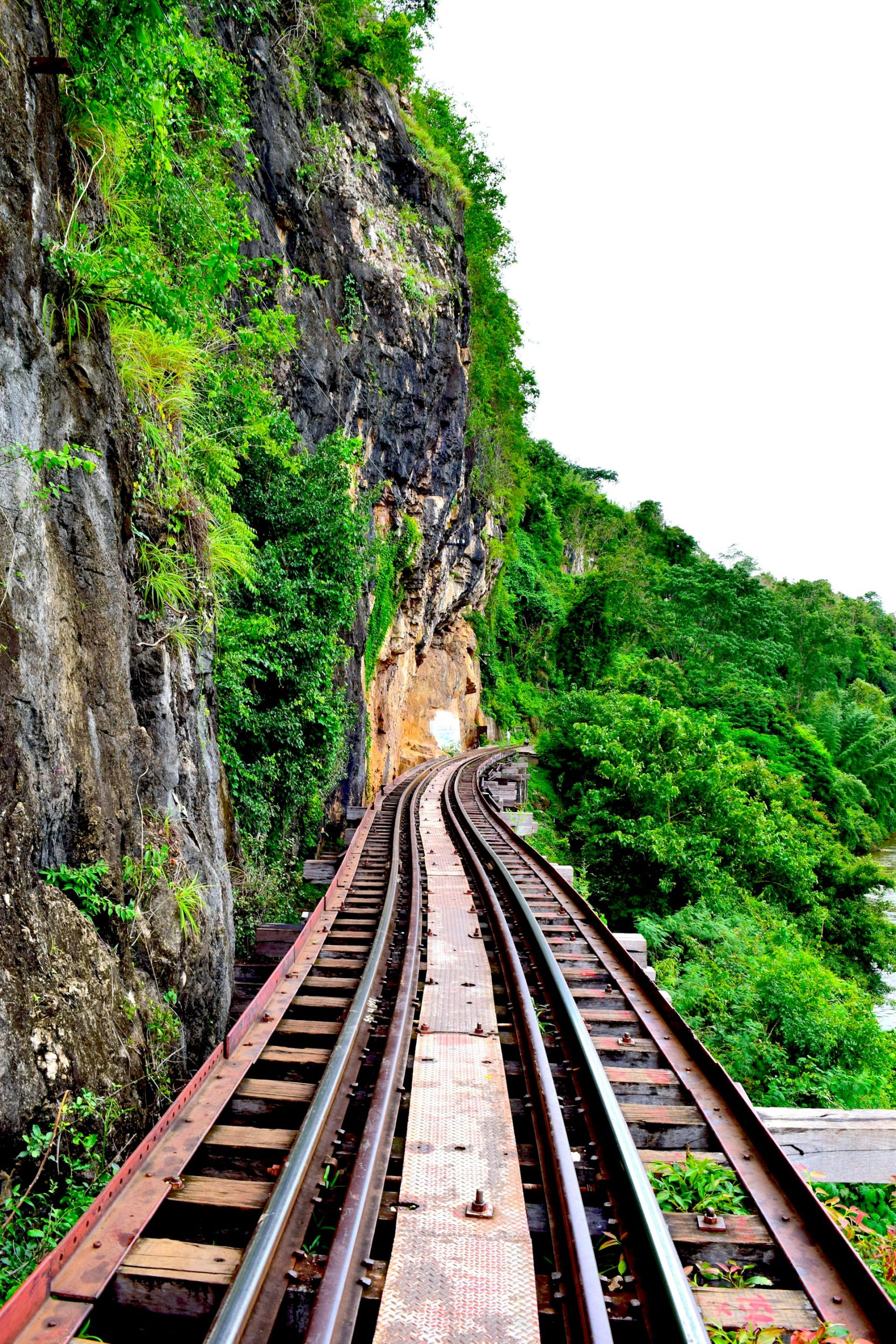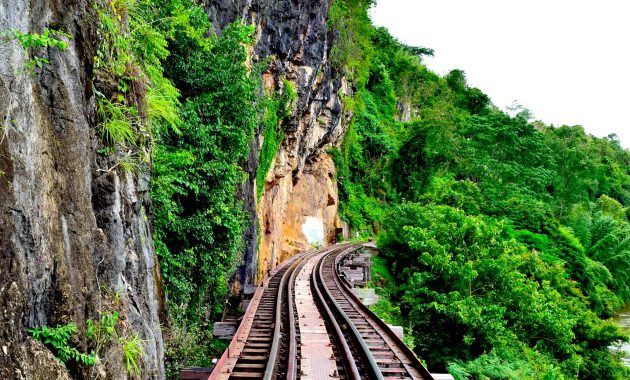
Kanchanaburi, located in western Thailand, offers visitors not just natural beauty but also a deep and significant history. This region played a pivotal role during World War II, where the infamous Death Railway was built. For those with an interest in wartime history, Kanchanaburi is a destination that provides an immersive experience through its various historical landmarks and memorials dedicated to the tragedies of the war. The journey through Kanchanaburi is both emotional and enlightening, allowing us to reflect on the sacrifices made and the resilience of humanity during one of the darkest chapters in history.
The Bridge on the River Kwai: Symbol of the Death Railway
One of the most famous landmarks in Kanchanaburi is the Bridge on the River Kwai. This steel bridge became a symbol of the Death Railway, a 415-kilometer rail line constructed between Thailand and Myanmar (then Burma) under the command of the Japanese during World War II. The bridge, though reconstructed after the war, stands as a powerful reminder of the forced labor that resulted in the deaths of over 100,000 prisoners of war (POWs) and local laborers.
The bridge offers more than just a historical artifact; visitors can walk along the railway and gain a visceral understanding of the difficulties faced by those who worked here. Nearby, the JEATH War Museum provides a comprehensive look at the construction of the railway, displaying artifacts, photographs, and testimonies from the survivors. For those seeking a deeper understanding of the war’s impact on this region, a visit to this iconic structure is essential.
Hellfire Pass Memorial: A Tribute to the Fallen
Another significant site in Kanchanaburi is the Hellfire Pass Memorial, located about 80 kilometers from the town center. Hellfire Pass was one of the most difficult sections of the Death Railway to construct, requiring prisoners and local laborers to cut through solid rock with minimal tools. The name “Hellfire” is derived from the nightmarish sight of emaciated workers laboring in the torch-lit night.
Today, Hellfire Pass has been preserved as a memorial to honor the thousands of lives lost in its construction. The Hellfire Pass Memorial Museum, established by the Australian government, offers an emotional experience, with well-curated exhibits explaining the harsh conditions faced by the workers. Visitors can also walk along the pass itself, following a trail that leads through the deep rock-cutting, providing a haunting reminder of the sacrifices made here.
Kanchanaburi War Cemetery: Remembering the Victims
A visit to the Kanchanaburi War Cemetery is a somber but important part of understanding the full scope of the tragedies that occurred during World War II. This well-maintained cemetery is the final resting place for nearly 7,000 Allied POWs who perished during the construction of the Death Railway.
Rows upon rows of gravestones stand as silent testimony to the soldiers from various Allied nations, primarily from Britain, Australia, and the Netherlands. The inscriptions on each gravestone tell a personal story of loss and sacrifice. Walking through the cemetery, one can’t help but reflect on the high cost of war and the enduring legacy of those who gave their lives so far from home.
Adjacent to the cemetery is the Thailand-Burma Railway Centre, an interactive museum that delves into the history of the railway and the lives of the POWs. With its extensive collection of documents, photos, and personal stories, this center adds a rich layer of context to the visit, making it a must-see for history enthusiasts.
The JEATH War Museum: Stories of Survival and Tragedy
Situated close to the Bridge on the River Kwai, the JEATH War Museum (an acronym for Japan, England, Australia, Thailand, and Holland) offers a poignant glimpse into the experiences of the prisoners of war during the construction of the Death Railway. The museum is housed in a bamboo hut that mimics the conditions in which the POWs were forced to live.
The exhibits within the museum are a stark reminder of the harsh realities of war, showcasing photographs, drawings, and personal items from the prisoners. The JEATH War Museum’s layout is simple yet effective, allowing visitors to connect on a personal level with the individuals who endured unimaginable hardships. Through these exhibits, we are reminded not only of the cruelty of war but also of the resilience of the human spirit.
Chungkai War Cemetery: A Quiet Place of Reflection
While the Kanchanaburi War Cemetery is the largest in the region, the Chungkai War Cemetery offers a quieter, more intimate place for reflection. Located just a few kilometers outside Kanchanaburi town, this cemetery is the resting place of more than 1,700 soldiers who died during the war.
This site is lesser-known compared to its counterpart in Kanchanaburi but provides a similarly moving experience. The well-tended graves and tranquil atmosphere invite visitors to pause and contemplate the sacrifices made during the war. Visiting both cemeteries provides a fuller understanding of the scale of loss experienced during the construction of the Death Railway.
The Death Railway Today: A Journey Through History

While the historical landmarks of Kanchanaburi serve as memorials to the past, the Death Railway itself is still operational today. Visitors can take a ride on the train, which runs along parts of the original track from Kanchanaburi to Nam Tok. The journey offers stunning views of the surrounding countryside and passes through sections of the original railway line, including the scenic Wang Po Viaduct.
Riding the train allows travelers to gain a deeper appreciation of the harsh conditions under which the railway was built. As the train winds its way through the lush landscape, it’s hard to imagine the suffering that took place here decades ago. Yet, the beauty of the region stands in stark contrast to its brutal history, serving as a reminder of both the darkness of war and the resilience of nature and humanity.
Conclusion: A Journey Through History and Memory
Exploring Kanchanaburi’s historical landmarks is an emotional and enlightening journey through the past. Each site, from the Bridge on the River Kwai to the Hellfire Pass Memorial, offers a poignant reminder of the human cost of war. As we walk in the footsteps of those who lived, worked, and died here, we gain a deeper understanding of the resilience of the human spirit and the importance of remembering the past to shape a better future.